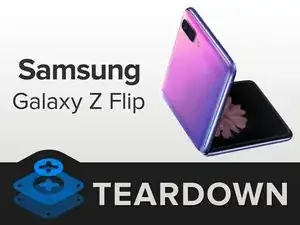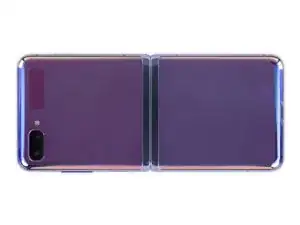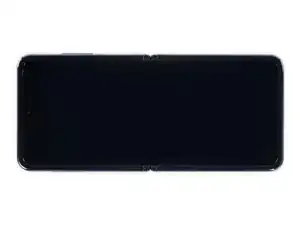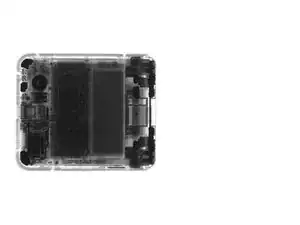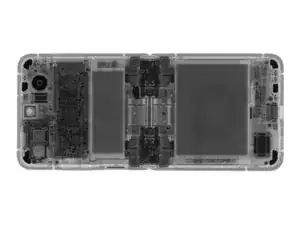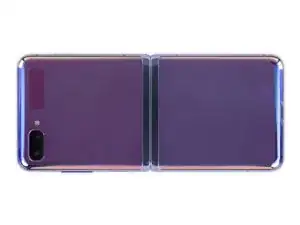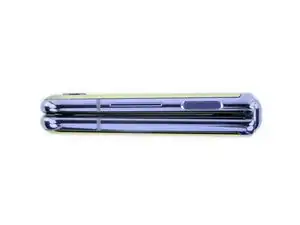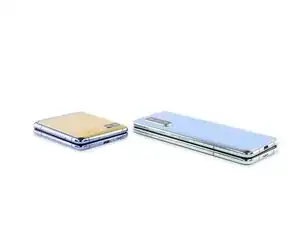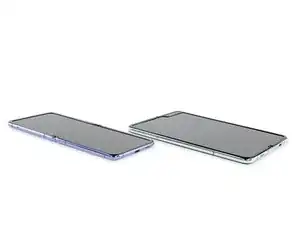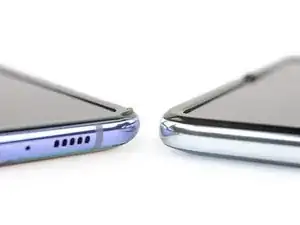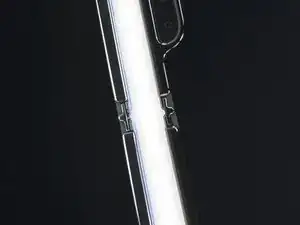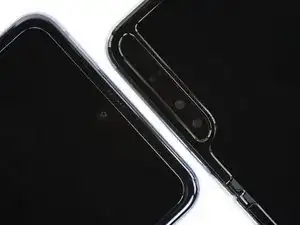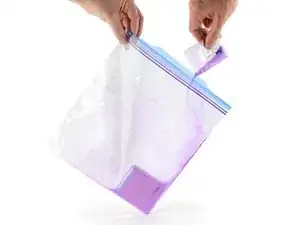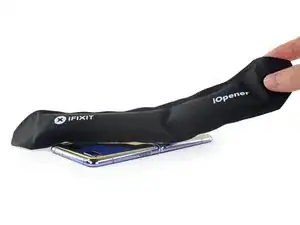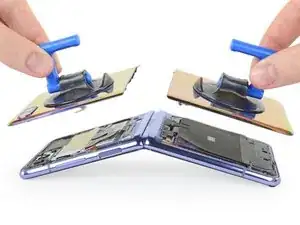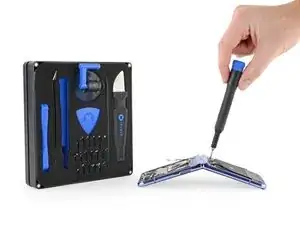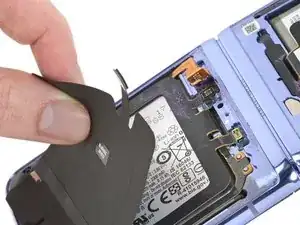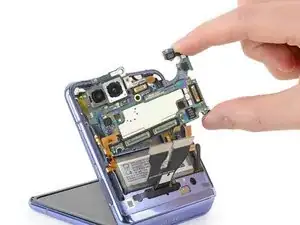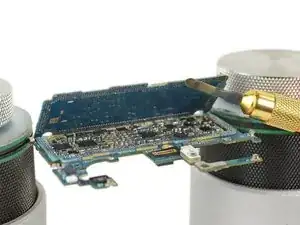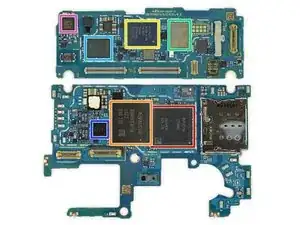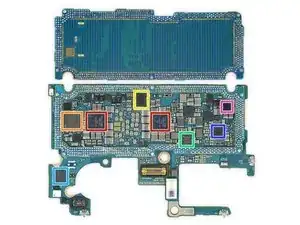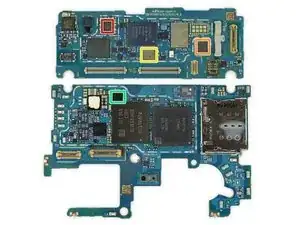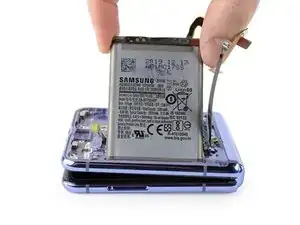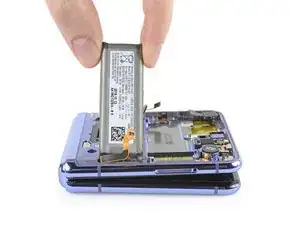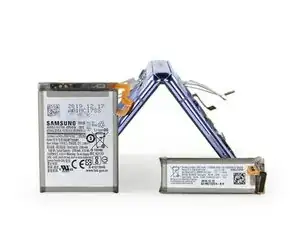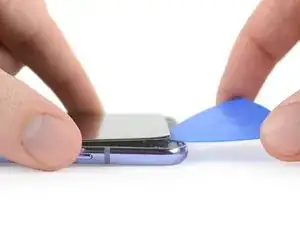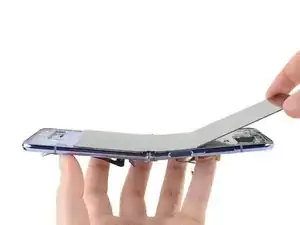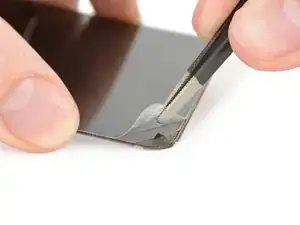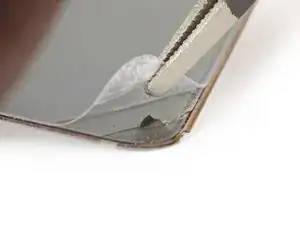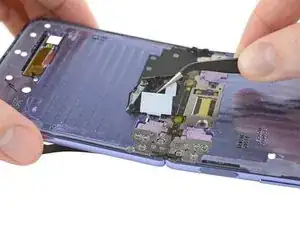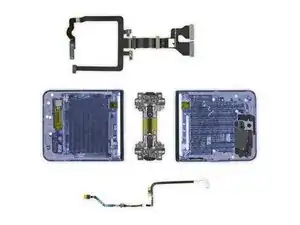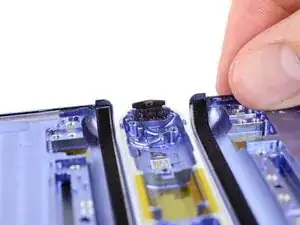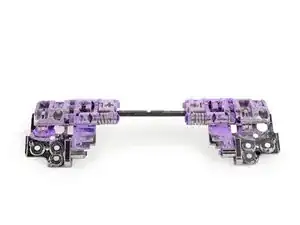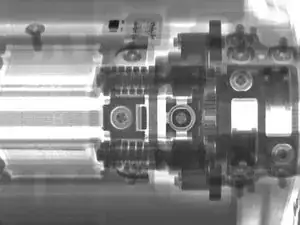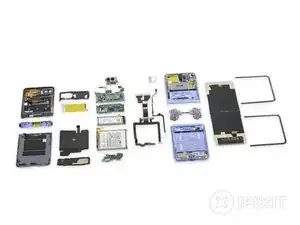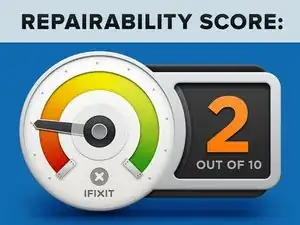Introduction
Samsung proudly touted their hot new Galaxy Z Flip’s folding glass display and the “layer of fibers” built into its hinge at their Unpacked event last week. We barely managed to get ahold of one, and now it’s time to put it to work. Not as a phone, of course—as a teardown victim. Let’s see what’s really going on in there.
For more exciting teardowns and repair news, be sure to follow us on Instagram, Twitter, and Facebook. For iFixit delivered, subscribe to our newsletter.
Tools
-
-
Do specs matter? For $1,380 you'd expect to get a pretty cutting-edge handset, and at least in this case, you do. The Flip out-flexes the Moto Razr we tore down last week:
-
6.7" foldable ultra-thin-glass AMOLED Display, 21.9:9 aspect ratio, 2636 x 1080 pixels (425 ppi)
-
2.95 GHz, 64-bit, octa-core Qualcomm Snapdragon 855+ SoC
-
8 GB of RAM and 256 GB of internal storage
-
3300 mAh of battery power in two cells
-
Two rear cameras, both 12 MP: one ƒ/1.8 wide-angle and one ƒ/2.2 ultra-wide; one 10 MP ƒ/2.4 selfie cam
-
"Sweeper technology" made up of "a layer of fibers" inside the "Hideaway Hinge" to "repel dirt and dust"
-
Blinding psychedelic Mirror Purple finish
-
-
-
We still flip out at every opportunity to put something in one of Creative Electron's X-ray machines, and this occasion is no exception.
-
Findings include:
-
Aluminum-and-glass construction—easily distinguished from the darker, denser steel frame we observed in the Razr
-
A tiny, stacked motherboard
-
Two distinct battery cells
-
An extremely robust spring-loaded hinge assembly
-
And at the corners, matching sets of magnets for secure closing action.
-
-
-
The Z Flip seems to fold closed a little more cleanly than the Fold did. In other words: there's less of a gap around the hinge between the two folding halves.
-
Open the Z Flip up, and you'll immediately spot the crease in the display. That new glass sure creases like plastic...
-
Looks like it scratches like plastic, too! Unsurprisingly, it's not as durable as the Gorilla Glass that adorns the non-folding devices we're used to.
-
-
-
Samsung touts a 6.9-7.2 mm thick phone, but measures that without the plastic bezels inherited from the Fold (seen on the right).
-
Another thing the Flip inherits: the seemingly unchanged "crease caps"—those T-shaped bits—from the v2 Fold.
-
The camera notch situation, on the other hand, is much improved. The Flip's hole-punch selfie cam makes for a far less clunky experience.
-
-
-
Samsung explains that the Z Flip's hinge-sweeping "brushes"— and we're quoting here—use nylon fibers crafted by micro-height-cutting technology to repel dirt and dust.
-
But if you actually buy this thing and turn it on, you get a litany of warnings that is somewhat less confidence-inspiring.
-
We'd like to test the utility of that new "fiber shield," so we introduce our Flip to some bright purple dust, shake n' bake style.
-
Spoiler alert: After a few seconds of heavy dust exposure, opening the phone results in horrible popping noises and a hinge that's frozen solid. Out pours a teaspoon's worth of purple powder.
-
This teardown just became an investigation. In standard Galaxy-opening fashion, we turn to our trusty iOpener to remove both rear covers.
-
Already we spot our purple pixie dust peeking out from under the wireless charging coil—not a great omen.
-
-
-
This pocket-sized phone is perfect prey for our most portable toolkit yet, the Essential Electronics Toolkit—everything you need, and nothing you don't.
-
Dust, busted—peeling up the charging coil reveals a powdery reminder that you should believe the scary warning text more than the "sweeper technology" marketing hype.
-
Meanwhile, the motherboard exhibits a psychedelic rainbow sheen—clear evidence of a hydrophobic nano-coating.
-
-
-
The Flip packs a dense, double-stacked motherboard—known in the industry as a substrate-like PCB. We first saw this space-saving technology in the iPhone X, and more recently in the Note10. It makes life harder for board repair experts, but also packs a lot of chips into a tiny space:
-
Samsung K3UH7H70AM-AGCL 8 GB LPDDR4X RAM layered on top of the Snapdragon 855 CPU
-
Samsung KLUEG8UHDB-C2D1 UFS 3.1 256 GB NAND Flash
-
Broadcom AFEM-9106 front-end module
-
Skyworks SKY78160-51 Low Noise Amplifier
-
Qualcomm SDR8150 RF transceiver
-
Qualcomm WCN3998 WiFi + Bluetooth SoC
-
NXP Semiconductor PN80T NFC controller w/ Secure Element
-
-
-
More chips inside this silicon sandwich include:
-
Qualcomm PM8150 power management IC
-
Qualcomm WCD9341 audio codec
-
Samsung S2MIW04 power management
-
Samsung S2DOS04 DC-DC converter (likely for the backlight)
-
Qualcomm QDM3870 RF front-end module
-
Samsung S2MPB02 power management IC
-
Likely a Texas Instruments TAS2562 audio amplifier
-
-
-
Just a little more filling in that sandwich:
-
Qualcomm QET5100 envelope tracker
-
Likely a Qualcomm QDM3870 front end module
-
Skyworks SKY77365-11 quad-band GSM / GPRS / EDGE power amplifier module
-
Likely ON Semiconductor FPF3788UCX OVP load switch
-
-
-
We remove two batteries for UNLIMITED POWAHHH!*
-
In terms of actual power, the larger of the two batteries is limited to a typical capacity of 2370 mAh and 9.15 Wh, with the smaller battery sporting 930 mAh and 3.59 Wh. All that adds up to 12.74 Wh.
-
Stubborn glue secures both batteries, per usual. Alcohol and careful prying are required to fetch them out. This is starting to look like a miniature Galaxy Fold...
-
-
-
Lock Z-foils in attack position! These glued-down plastic bezels guard the primary display—just like on the Fold.
-
Removing the display itself takes a little more tact—mild heat and careful prying gradually releases it from the frame. It's adhered mainly at the top and bottom edges, not so much in the middle.
-
Like the Fold's, this display wears armor—a metal support sheet backing each side, and slotted chain mail down the middle.
-
-
-
Time to unfold this foldable's ultra-thin folding glass!
-
The top layer is indeed plastic, which sorta defeats the purpose of a "glass" display—i.e., its scratch-resistance.
-
You can tell the middle layer is glass because of the way it shatters when we poke at it. Oops.
-
Overall, we rate this glasstic display a solid meh.
-
-
-
Peeling back the hinge's "protective" tape reveals the highest concentration of our purple-y powder yet.
-
We're gonna need further disassembly to clean out all the powder. Let's go ahead and pull everything out.
-
First we find some clever interconnect cables, shaped to route them safely around the hinge.
-
Next we spot the lauded brushes, standing guard over a dust-covered phone. What's that? They look a little embarrassed? Yeah they probably should.
-
-
-
Here's how our hinge looked after the dust test. We swear to Zeus we did not stage this in any way.
-
We gotta say, the hinge looks really cool. Like something straight off of Iron Man's Mk. 2 suit.
-
This hinge isn't quite as wild as the one we found in the Fold, but it certainly seems robust (despite being laid low by dust) and full of handsome gears.
-
And hey maybe it would clear itself eventually in normal use? Or maybe hinge lubricants turn this phone into a dust dragon...
-
-
-
Samsung’s Galaxy Z Flip may unfold in a new direction, but its updates aren’t the panacea for foldable phones.
-
The “sweeper technology” brushes performed hilariously poorly in our dust test. Though the test wasn't exactly demonstrative of real-world use, the amount of dust trapped in the brushes (very little) wasn't exactly confidence-inspiring.
-
The “ultra-thin glass” is actual glass—under a layer of plastic—but it doesn’t feel like glass, or provide a more scratch-resistant surface than the Fold had.
-
Unless you’re an Instagram influencer living in a pristine apartment who needs the newest hotness, this phone is probably not for you. It’s more of a novelty luxury item. And maybe that's okay? All new technology has to start somewhere—let’s hope this one either matures quickly or perishes swiftly.
-
-
-
The Samsung Galaxy Z Flip earns a 2 out of 10 on our repairability scale (10 is easiest to repair):
-
A single Phillips driver takes care of all the screws.
-
Many components are modular and can be replaced independently.
-
Glued-down glass panels are an unnecessary barrier to entry for repairs, especially given the phone's lack of ingress protection.
-
Battery replacements are possible, but unnecessarily difficult due to poorly-routed cables and the lack of stretch-release adhesive.
-
The components involved in the folding process are likely to wear over time (even if you don't bathe them in purple dust), necessitating eventual replacement.
-
18 comments
Cool review!
Still, the type of powder used is an overkill ;)
Lucian M -
True, I feel like the powder used was like saying that something’s water-resistant and then you shake it in a bag of water to see how much goes in. Resistant, is not “proof”.
The amount of “pretend dust” is excessive. It may work better on light dust as found in pickets which I think would be more like hair or fluffy matter. I think this will be the :flip” to beat for a short while until improvements are made which is inevitable.
laaubin -
